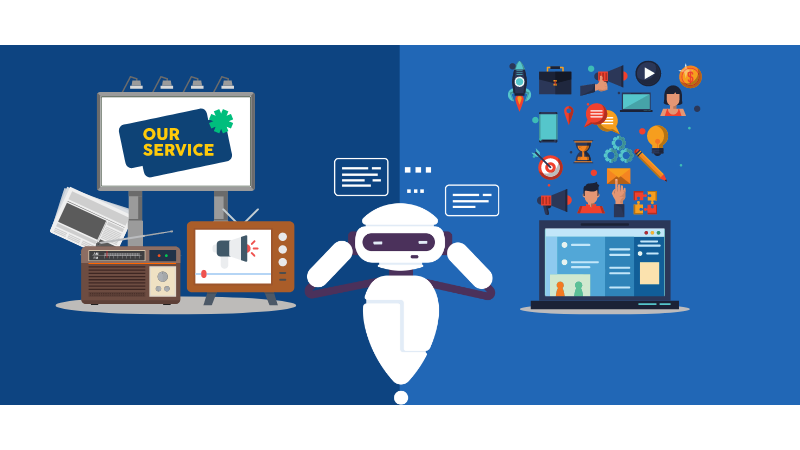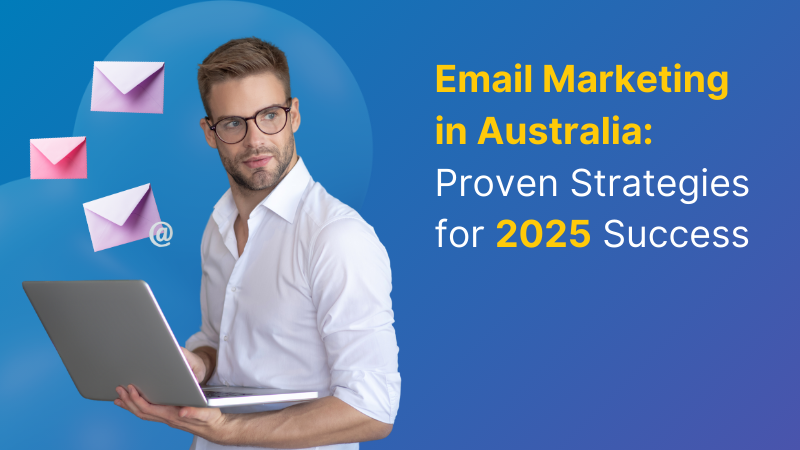Setting the stage for a successful B2B business is challenging, and so is marketing it to the right audience. Sticking to outdated strategies no longer delivers the best results in today’s market.
Fortunately, technological advancements have transformed marketing. This shift gave businesses more efficient ways to connect with customers and enabled companies to adopt targeted and personalized approaches that capture client attention more effectively.
Modern marketing channels expand geographical and audience reach and make lead generation more accessible and cost-efficient. They use advanced targeting and real-time engagement, so every interaction becomes an opportunity, and even a single website visit can turn into a potential lead.
Businesses can now engage customers in real-time, whether nearby or across the globe, by integrating multiple channels. The combination of traditional and digital marketing—enhanced by AI—allows for precise targeting and content optimization at scale.
In fact, 95% of marketers believe that integrating multiple channels allows for better audience targeting at the right time. Brands that execute consistent and effective multi-channel marketing see customer retention rates nearly 91% higher than those that don’t.
Stop relying on outdated tactics—leverage our multi-channel approach today.
What do you want to learn?
Traditional and Digital Marketing, and AI in between

Traditional marketing once had success, but its reach and usability have been hampered by the rise of internet usage and smartphones. The widespread use of devices like iPods, tablets, and social networks has allowed even small businesses to advertise on websites and platforms like Facebook, WhatsApp, Twitter, and podcasts, often at a lower cost than traditional methods. However, this type of marketing still has its limitations:
Intrusive to Consumers:
Traditional marketing is often forced on customers through TV ads or printed flyers, leading to lower response rates. Digital marketing, however, allows for more tailored engagement, resulting in higher response rates.
Static Text:
Once an ad is published in traditional marketing—like in a newspaper—it cannot be updated. If you run out of stock, customers remain uninformed. Digital marketing enables real-time updates to ads, keeping customers up to date.
Lack of Customization:
Traditional marketing typically targets broad audiences, such as women in general for an ad on handbags. Digital marketing, on the other hand, enables businesses to target individuals based on their specific interests and browsing behaviors.
Time-Consuming Updates:
Traditional marketing requires ads to be prepared well in advance, especially for publications like newspapers. Digital marketing allows businesses to make quick changes, saving time and adapting to market conditions promptly.
Higher Costs:
Traditional marketing methods, such as newspapers or flyers, come with recurring costs. Online marketing typically involves lower ongoing expenses, and updates can be made without additional charges.
Ad Avoidance:
Traditional ads are often ignored, whether by changing the TV channel or overlooking a billboard. Digital marketing offers interactive and engaging formats that capture attention more effectively.
Limited Information:
Traditional media has limited space, making it hard to present complex pricing or varied offers. Digital marketing provides ample space to display detailed information, pricing variations, and personalized promotions tailored to customer preferences.
Digital Transformation:
Many traditional marketing methods, such as newspapers and magazines, are moving online. This shift allows businesses to reach customers wherever they are, especially as internet access becomes more widespread.
Making the Shift to Digital Marketing
As marketers, we understand that consumer behavior and purchasing decisions are constantly evolving. While traditional marketing remains relevant, businesses are increasingly turning to digital strategies to stay competitive and engage effectively with modern consumers.
Many B2B companies relying on traditional marketing alone still face challenges such as one-size-fits-all communication, tracking customer journeys, and using data efficiently. These methods often result in fragmented insights and hinder personalized engagement.
However, digital marketing has changed the landscape by offering more precise targeting and real-time interaction.
The rise of AI and digital marketing enabled marketers to gain deeper customer insights, segment audiences more effectively, and personalize experiences. AI-driven content creation enables real-time adjustments, improving engagement across channels.
Digital platforms like SEO, PPC, social media, and email marketing allow businesses to engage audiences in real-time, personalize content, leverage data to improve performance, optimize resources at a lower cost.
While traditional marketing still has its place, AI, machine learning, and data analytics are reshaping customer engagement. AI allows for more targeted, responsive strategies, enabling B2B marketers to quickly adapt to changing consumer behavior.
Companies that combine traditional and digital marketing and optimize their techniques with AI will ultimately see better lead generation, greater reach, and success.
Callbox combines traditional and AI-powered digital strategies to keep your pipeline full.
What do you want to learn?
Significance of marketing channels in lead generation
Marketing channels play a key role in lead generation by connecting businesses with their target audiences and capturing potential leads. Choosing the right channel requires understanding your audience. Here’s a look at how these channels impact lead generation:
- Expand Reach and Visibility
Marketing channels like social media, search engines, and email help businesses target specific segments and engage effectively with prospects. - Personalized Experience
Understanding audience behavior allows businesses to tailor messaging and content, improving relevance and increasing conversion chances. - Lead Generation and Conversion
Marketing channels attract, capture data, and move prospects through the sales funnel, driving lead generation and conversions. - Lead Nurturing
Combining lead nurturing strategies with marketing channels helps B2B businesses build relationships that convert into sales. - Data and Insights
Channels provide valuable data on audience behavior, preferences, and engagement, enabling businesses to refine strategies and more effectively target the right customers.
See how a Data Analytics Company expanded in Singapore & Australia with Callbox’s Lead Generation
Unlock Success with AI-Powered Lead Generation Services
Integrating traditional marketing channels with digital strategies and AI allows businesses to generate high-quality leads and stay competitive in today’s fast-evolving market. By blending these approaches, businesses can leverage the strengths of each channel—reaching a broader audience, nurturing relationships, and optimizing conversions in ways that were not possible before.
Traditional marketing provides a solid foundation, offering broad visibility and brand recognition. However, in the digital age, its reach and impact can be limited, especially when compared to the precision and real-time engagement that digital channels offer. Digital marketing, with its tools like social media, search engines, and email campaigns, allows businesses to connect with highly targeted audience segments, offering personalized messaging that resonates with individual needs and preferences.
This is where AI steps in. By integrating AI with both traditional and digital strategies, businesses can enhance the personalization of their marketing efforts, analyze customer data in real time, and make data-driven decisions that optimize campaign performance.
It enables marketers to automate processes and predict customer behavior, allowing businesses to adapt quickly to market shifts and improve engagement across all touchpoints.
Callbox’s integrated approach seamlessly combines traditional, digital, and AI-powered strategies to maximize lead generation. Through the power of a Multi-touch, Multi-channel approach, including Voice, Email, Chat, Web, Social Media, Webinars, and Virtual Events, we ensure that businesses can reach their audience at the right time and through the right medium, nurturing leads efficiently and effectively. The result is a more cohesive and optimized lead-generation process that drives higher conversions and measurable success.
With Callbox’s multi-touch approach and deep expertise in lead generation, businesses can unlock the full potential of their marketing efforts, ensuring sustained growth and success in an increasingly competitive landscape.













